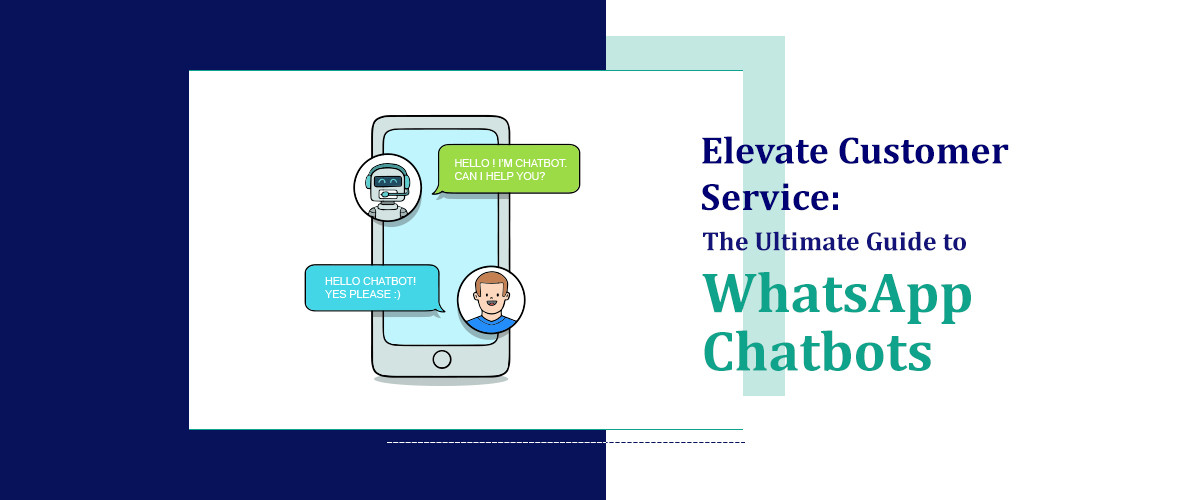What we'll cover
A first-rate applicant experience is crucial for drawing in and keeping top talent in today's cutthroat employment market. Job seekers assess a company's ideals and regard for candidates in addition to how well a post fits their skill set. Recruiters, hiring managers, and HR specialists can use Applicant Tracking Systems (ATS) to improve candidate experiences and expedite the hiring process, which will increase the likelihood of luring and keeping top talent. We'll look at five practical methods to use an applicant tracking system (ATS) to improve your hiring processes and make a good first impression on candidates in this piece.
Understanding the Importance of Candidate Experience
-
Why Candidate Experience Matters Now More Than Ever
Candidates nowadays are knowledgeable and discerning, and they anticipate a smooth and expert recruiting process. Not only can a bad experience drive away excellent personnel, but it can also damage the reputation of your business.
-
The Function of ATS in Contemporary Hiring
An applicant tracking system (ATS) enables HR professionals to prioritise candidate interaction and communication by automating and streamlining the hiring process. This ensures that everyone has an efficient and consistent experience.
-
Specifying Your Expectations for This Guide
Learn useful tactics to turn your applicant tracking system into a powerful tool for the candidate experience. With the help of this guide, you can improve communication and develop more individualised interactions to make the hiring process easier and more pleasurable for all parties.
How Do Applicant Tracking Systems Work?
By automating the gathering, organising, and recording of application data, applicant tracking systems (ATS) improve efficiency in the hiring process. Job vacancies are posted by recruiters on several sites, and these postings are incorporated into the applicant tracking system (ATS), forming a consolidated repository for applicant data management.
Resumes and supporting materials from candidates applying through the approved portal are automatically loaded into the applicant tracking system. The application process is then carried out by the system using algorithms to sort through the applications according to predefined criteria that the recruiter has provided, such as relevant keywords, education, and job board software for USA.
Recruiters' review processes are expedited as the applicant tracking system (ATS) automatically classifies and ranks prospects based on their qualifications after the first screening is over. Additionally, the system makes it easier for applicants to communicate with one another by sending them automated emails and notifications that update them on the status of their applications.
Recruiters can focus on more strategic recruitment operations by using an applicant tracking system (ATS) to automate hiring process duties including monitoring candidate comments, arranging interviews, running background checks, and administering tests.
Importance of Using Applicant Tracking System Online
For effective recruitment in the highly competitive US employment market, an Applicant Tracking System (ATS) is essential. HR personnel are empowered to focus on strategic hiring decisions by automating repetitive chores like candidate correspondence and resume screening with applicant tracking systems (ATS). Using this tool would help businesses successfully find and attract top applicants by the performance management system the amount of applications generated in such a large talent pool.
The technology expedites the process of identifying the best candidates by simplifying the sorting and filtering of candidates according to predetermined criteria. By promoting cooperation among hiring teams and offering perceptive data, it maximises recruitment tactics, improving hire quality and cutting down on time-to-fill in the process.
Almost all Fortune 500 firms now use Applicant Tracking Systems (ATS), a widespread acceptance that has completely changed the recruitment process. ATS use is expected to continue as businesses come to understand the value and efficiency of technology-driven hiring procedures.
Asymmetrical candidate screening (ATS) can greatly increase diversity and reduce hiring bias by standardising the screening procedure and removing personal information from resumes. This impartial method guarantees that each applicant is assessed equally and only on the basis of their qualifications, promoting diversity in the workplace and protecting employers from possible discrimination lawsuits.
Five ways to use an ATS to improve the candidate experience
1. Streamlining Application Processes
- Streamlining Application Forms
Prolonged and intricate application processes may turn off prospective applicants. Make use of your application tracking system (ATS) to create forms that are easy to fill out and gather the necessary data without overwhelming candidates.
- Applications That Are Mobile-Friendly
Since more and more job searchers are using their smartphones to search and apply for workforce management software openings, make sure your applicant tracking system (ATS) provides a smooth mobile application experience to draw in more prospects.
- Features that Auto-Fill
By allowing candidates to quickly transfer their resume information into the application form and doing away with the necessity for laborious manual input, auto-fill features expedite the application process.
2. Enhancing Communication and Engagement
- Automated Email Reactions
In order to provide applicants with a pleasant first impression, use your applicant tracking system (ATS) to set up automated email acknowledgements for all incoming applications. This will reassure candidates that their submission has been received and is being reviewed.
- Frequent Feedback and Updates
While hiring, keep lines of communication open with candidates by giving prompt feedback and frequent updates. Use your applicant tracking system to plan and send out customised communications at key points, such after the interview or when an offer of employment is made.
- Customised Wording
Improve candidate engagement by creating customised communications with your applicant tracking system (ATS). Address candidates by name and include specifics from their application or interview in your reply to demonstrate your sincere interest and recognition.
3. Improving Interview Scheduling
- Options for Self-Scheduling
Give candidates the ability to self-schedule their interviews by providing them with options through your applicant tracking system. By taking into account their hectic schedules, this candidate-centric strategy not only makes the process run more smoothly by removing back-and-forth communication, but it also greatly improves the whole experience of the candidate.
- Automated Notifications
Send automated reminders for interviews with important information like time, place, and any preparation materials needed to reduce no-shows and improve candidate readiness.
- Organising Interviewers
By effectively managing interviewers' availability, averting scheduling conflicts, and saving time for hiring teams and candidates alike, your applicant tracking system (ATS) may expedite the interview process.
4. Personalised and Data-Driven Interactions
- Profiles of Candidates
To enable individualised interactions and data-driven decision-making, create thorough candidate profiles in your applicant tracking system (ATS) that go beyond resumes and include thorough interview notes and assessment findings.
- Customised Interview Questions
Using the information obtained from their application in your applicant tracking system, develop interview questions that are particular to the qualifications and experiences of the prospect to show that you genuinely care about their fit.
- Management of Feedback
To provide thorough information for well-informed decision-making and to keep a clear record of candidate interactions, centralise and streamline your feedback collection process by using your applicant tracking system (ATS) to capture and manage interviewer comments.
5. Leveraging Analytics for Continuous Improvement
- Monitoring Candidate Experience Data
You can get useful insights to identify areas where your hiring process needs to be improved by tracking important metrics like time-to-hire, candidate satisfaction scores, and drop-off rates within your applicant tracking system (ATS). This will ultimately lead to continuous improvement.
- Examining Recruitment Information
By using your Applicant Tracking System (ATS) to evaluate hiring patterns and statistics, you may identify areas for improvement and gain important insights into how well your initiatives are working.
- Putting Feedback Into Practice
You may use insightful feedback to improve your hiring procedures by routinely examining the input provided by hiring teams and candidates. In order to monitor these inputs and make the required adjustments, an ATS can be a very useful tool for promoting a continuous improvement culture.
What is the Primary Purpose Of an Applicant Tracking System?
An application tracking system (ATS) is a tool that manages the flow of candidates from the point of first application to the point of final hiring decision, thus streamlining the recruiting process. Recruiters can concentrate on finding and attracting top talent since it automates processes like candidate monitoring, interview scheduling, and resume sorting.
Employing an applicant tracking system (ATS) can help businesses find top talent more quickly, shorten the time it takes to employ, and improve the applicant experience overall all while strictly adhering to recruiting laws. Additionally, the system offers priceless data insights, enabling HR departments to assess the success of hiring, make data-driven choices, and eventually develop a labour pool that is more qualified and varied.
Modern applicant tracking systems (ATS) offer much more than just hiring process management. They also integrate social media and job advertising, parse resumes, provide candidate communication capabilities, and offer customisable reporting, all of which help expedite the hiring process for both recruiters and candidates.
Additionally, an applicant tracking system (ATS) makes it easier to build and manage a centralised candidate database, which gives recruiters the ability to quickly search for and find suitable candidates for upcoming positions. This helps to save time and money on long-term recruitment expenses while promoting a strong talent pipeline.
An applicant tracking system's main goal is to increase the efficacy and efficiency of the hiring process while also giving HR professionals useful information and resources. It is a vital tool for contemporary HR professionals since it helps draw in top talent, cut hiring expenses, and guarantee regulatory compliance.
Conclusion
Leveraging an Applicant Tracking System (ATS) can significantly enhance the candidate experience, making the recruitment process more efficient and enjoyable for all parties involved. By streamlining application processes, improving communication, providing timely feedback, enhancing personalization, and facilitating a seamless onboarding experience, organisations can create a positive impression that resonates with candidates. For SaaS platforms like Adviser, integrating these ATS features not only helps attract top talent but also builds a reputation as an employer of choice in the competitive job market in the USA. Ultimately, a focus on candidate experience fosters stronger relationships and cultivates a diverse talent pool, driving long-term success for businesses.
An Applicant Tracking System (ATS) is software designed to help organizations streamline their recruitment process by managing job applications and tracking candidates throughout the hiring process.
An ATS collects and stores resumes in a database, scans and ranks them based on predefined criteria, and allows recruiters to manage and track the progress of candidates from application to hire.
Key benefits include improved efficiency in managing large volumes of applications, enhanced ability to find the best candidates, better organization and communication within the hiring team, and compliance with hiring regulations.
Yes, an ATS can improve the candidate experience by providing timely updates, simplifying the application process, and ensuring better communication between the recruiter and the candidate.
Yes, many ATS solutions are scalable and offer features that cater to the needs of small businesses, helping them manage their recruitment process more efficiently and professionally.



